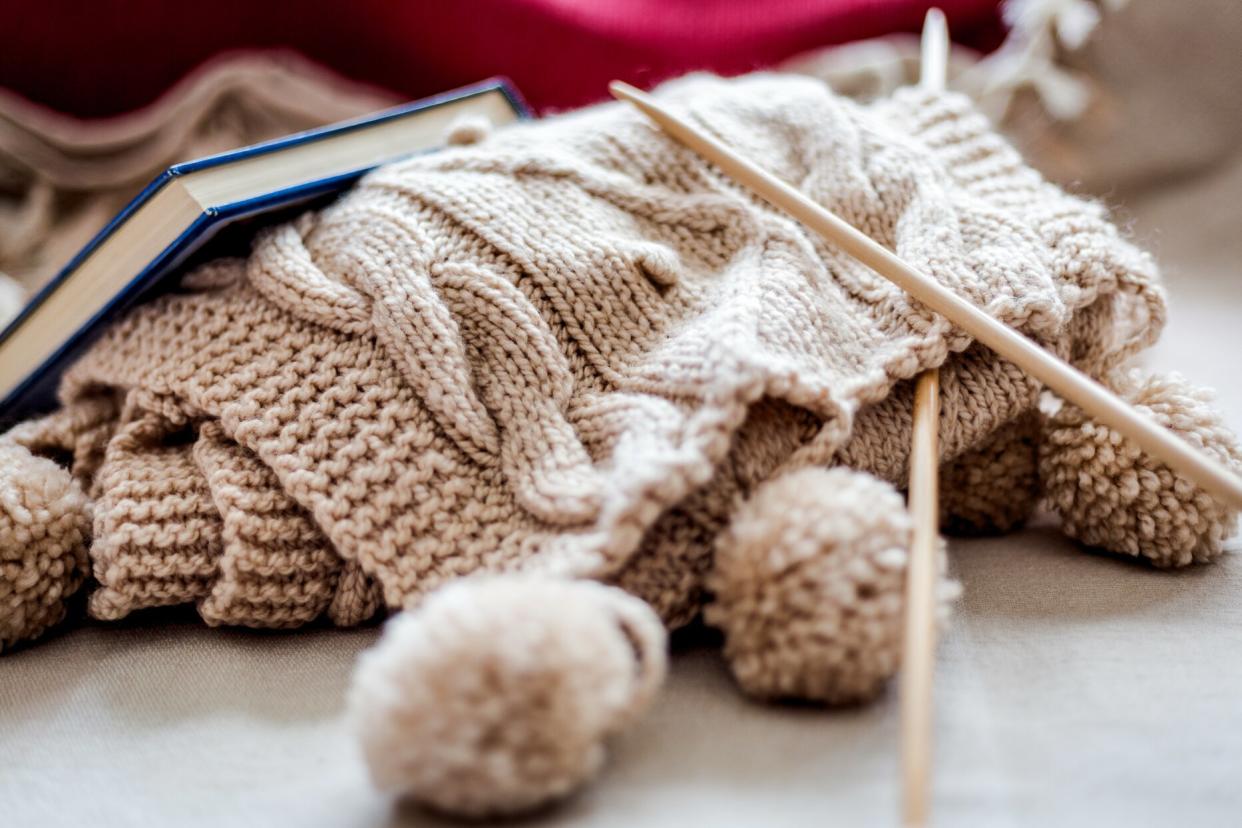How to Multitask While Knitting

Andrija Nikolic / Getty Images
Ask any knitter and they'll tell you the same: Multitasking is one of the great joys of the craft. "To be a multitasking knitter is to be engaged in something that's both fun and productive," says Davina Choy of Sheep & Stitch. "For many knitters, it affords the opportunity to do two enjoyable and relaxing things at the same time." Whether you're a seasoned knitter or a beginner, Choy says there's a method of multitasking for both skill levels. "Passive multitasking involves sitting or standing stationary while knitting, for instance, taking public transit, sitting in a car or plane, lying on the beach or waiting in line," she explains. "Active multitasking is a more advanced level of knitting that requires concentrating on two separate tasks at the same time, such as knitting while watching TV or listening to a podcast or a lecture."
Ready to learn to how to watch television, read, and knit at the same time? We asked Choy for advice and here's what she had to share.
Related: English Versus Continental: Which Knitting Style Should You Learn?
Start with a few stitches at time.
Practice doesn't always make perfect, but Choy says it certainly helps beginners get more comfortable with knitting while multitasking. "Start by knitting a few stitches as you normally would, and then glance up from your knitting," she says. "Try to knit the next stitch totally by feel without looking down at your work. You'll be surprised how natural it feels."
See how long you can go without looking down.
Once you can successfully knit a stitch without looking down, Choy says you're well on your way to becoming a masterful multitasker. "Next, try knitting two stitches without looking down, and continue adding stitches one by one until you reach the point where you need to look down at your knitting," she says.
Determine your blind knit threshold.
According to Choy, every multitasking knitter should know what their blind knit threshold is. "Your blind knit threshold is the point between stitches where you have to look down at your work," she explains. "It could be three stitches or five stitches or maybe even ten! Work up to your threshold. There's no right or wrong number. A blind knit threshold is whatever feels comfortable to you."
Get caught up in the process.
Above all else, knitting should be a meditative craft that helps you unwind—which is why Choy says to not get too wrapped up perfecting the art of multitasking. "Don't focus too much on productivity when multitasking while knitting," she says. "Knitting should be fun and relaxing. If you're making a lot of mistakes while multitasking, switch to doing just one activity."
Don't sweat the small stuff.
Like all arts and crafts, Choy says to remember that learning to knit while doing other things at the same time takes lots of practice and patience. "It takes time to develop your sense of feel for knitting, so don't be discouraged if you drop stitches at first," she says. "Start slow and work your way up from knitting one stitch blind to an entire row."

